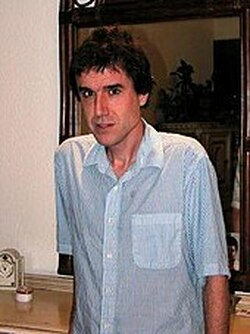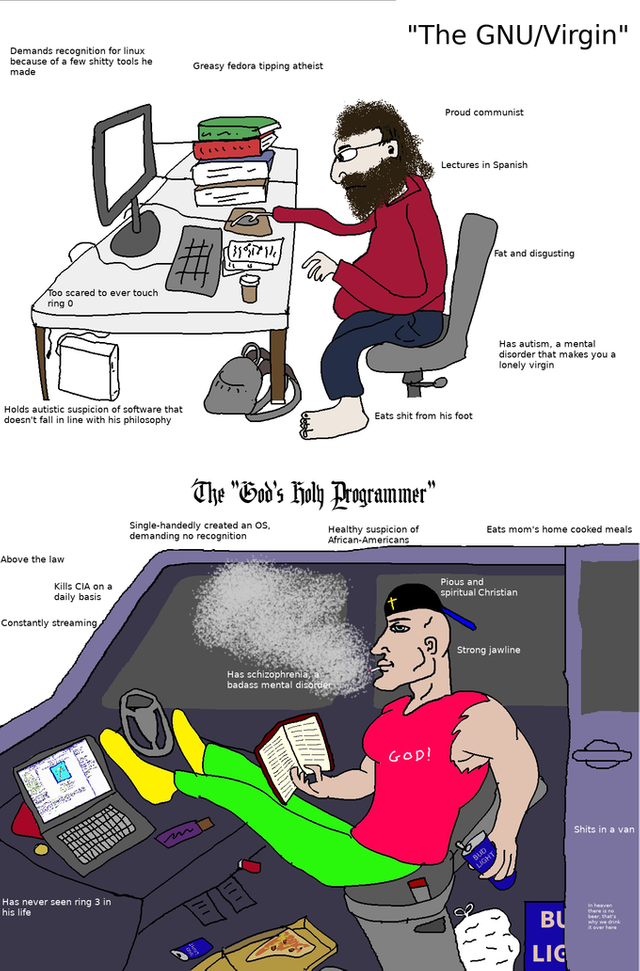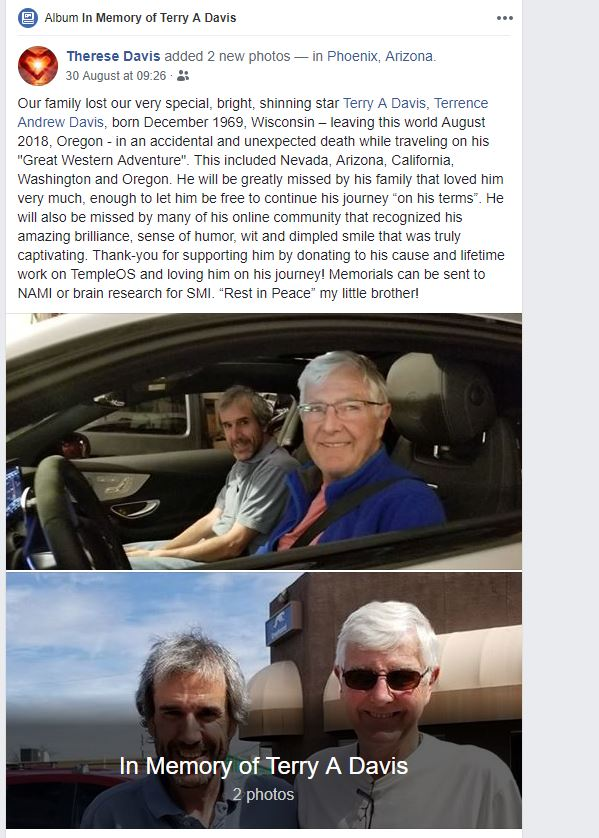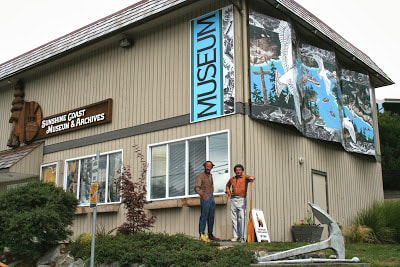 You may be aware of the tragic story of Terry A. Davis, the gifted programmer and engineer famous for creating TempleOS. Unfortunately on August 11th 2018, Terry Davis was struck by a train. He was pronounced dead at the scene in The Dalles, Oregon. Authorities were unable to work out if his death was suicide or accident. Shortly before his death Terry had stopped taking his medication, believing it stopped his creativity. During this period he continued to make videos and stream and was homeless on the streets of Portland. Fans offered him a space to live and food/supplies but it's not thought he ever took them up on this offer. Fan Tributes After his death many of his fans began to create some epic tribute content, some of which can be found below. These are mainly posted in /r/TempleOS_Official. Terry Davis made a huge difference in peoples lives, he was a great man. His streams brought education, creativity and inspiration to 1000's of people.
1 Comment
This story has been updated HERE with information on Peter Erlinder's return to the US and updates on the case he was arrested while defending.
American Professor Peter Erlinder could be back home as soon as Friday after a harrowing detention in a Rwandan prison. Rwandan President Paul Kagame reversed the decision by one of his judges by granting medical bail to Professor Erlinder. Erlinder was hospitalized after being arrested May 28th. It is unclear why he was hospitalized and what condition he is in. Rwandan leaders say Erlinder attempted suicide by swallowing pills while in Rwandan prison, Erlinder's family denies those allegations. Erlinder is accused of violating Rwanda's strict genocide denial laws. As many as one million Tutsis and moderate Hutus were murdered during the genocide beginning in April of 1994. Now, the country is rebuilding with policies forcing united reconciliation and strict laws against denying the genocide or anything that could foster 'genocidal ideologies'. Professor Erlinder says he doesn't deny massive violence happened in April 1994, but contends it's inaccurate to blame just one side for the atrocities. The current leaders of the Rwandan government, the Rwandan Patriotic Front and President Paul Kagame are credited with stopping the 1994 genocide, but the methods they used to put a stop to the slaughter have been criticized by several academics and historians as being too violent. The National Lawyer Guild, of which Erlinder is a past-president, is calling for all charges against him to be dropped. If convicted, he faces 25 years in prison in Rwanda. A rally for his release originally scheduled for Friday, June 18th at the United Nations has been canceled. Peter Erlinder is a law professor at William Mitchell Law School in Saint Paul, Minnesota. Erlinder is also a long time human rights advocate and Lead Defense Counsel for the International Criminal Tribunal on Rwanda, where he defends those accused of perpetrating the 1994 Rwandan genocide. Erlinder is known throughout the legal community for accepting unpopular defendants as clients in hot-button, international issues. Sources: Zanna B. A Brief History of Rwanda. Associated Content. Paige Cram. National Lawyers Guild Press Release. National Lawyers Guild. NA. Free Prof. Peter Erlinder. Facebook. Edmund Kaigre. Rwandan judge says no bail for US lawyer. AP. Suzanne Summerlin amp; Adam Mazo. Coexist: An Independent Documentary. NA. Peter Erlinder Bio. William Mitchell College of Law. The Sunshine Coast Council is one of the largest local governments in Australia – serving a community of more than 280,000 residents across an area of approximately 2,291 square kilometres.
Working at Sunshine Coast Council means so many different things. A diverse range of jobs, experience and lifestyle; capable, committed and professional staff in a wide range of different careers. Sunshine Coast Council aims to be a public sector leader and an employer of choice. We value the diversity of skills and experience that people bring to the organisation and which they deploy in servicing the community on a daily basis. Our employees’ passion and commitment to the region and their willingness to go above and beyond, coupled with a great place to work, is what sets Sunshine Coast Council apart in local government. Dr. Manuel Torres and his colleague Professor Paul Luckham (see references below), both of Imperial College in London, have been working together for nearly ten years to develop a material that can be sprayed onto the human body to serve as clothing and can also be taken off, washed, and used again. The result is a spray-on liquid material called Fabrican spray-on fabric, that can be sprayed using high pressure or from an aerosol can. And though it has a slight resemblance to silly string, it is most assuredly a different product, and that is because Fabrican dries on contact and is able to hold up under use; and then, it can be taken off as can any other garment, washed in a regular laundry washing machine, and then put back on again. The benefit to the wearer is that the garment is literally custom fit, in that the result looks very similar to a tight tee-shirt. Though this can be changed by applying more layers of Fabrican, and then through using different colored material in whichever way suits you.
The Fabrican spray-on material is made of very short fibers that combine with polymers that serve to bind the fibers together. A solvent is used to keep the material in a form for spraying until the spraying actually occurs; the solvent then evaporates. The short fibers can come from cotton, wool, linen or any other organic matter that can be fashioned into short fibers. The Fabrican spray-on material was introduced by the researchers in connection with the college by putting on a fashion show with live models wearing clothes that were created using nothing but the Fabrican spray-on material, which allowed for custom designed tops, dresses and skirts. The fashion show was such a success that it made news all over the world and has resulted in a lot of interest from designers, as well as others in other industries for other applications such as furniture covering and medical applications such as spray-on bandages for burn victims or as a means for delivering pain medication to people with severe injuries. It's not hard to peer into the future to see that spray-on clothes could become commonplace as people look for ways to produce clothes for less money and that fit better than anything they can buy currently. As of now, the only drawbacks to these new spray-on materials appears to be that not everyone wants to be seen in such form fitting clothes, and the fact that because they are generally delivered via aerosol can, the application is a very cold process, if only for a brief moment. |





 RSS Feed
RSS Feed
